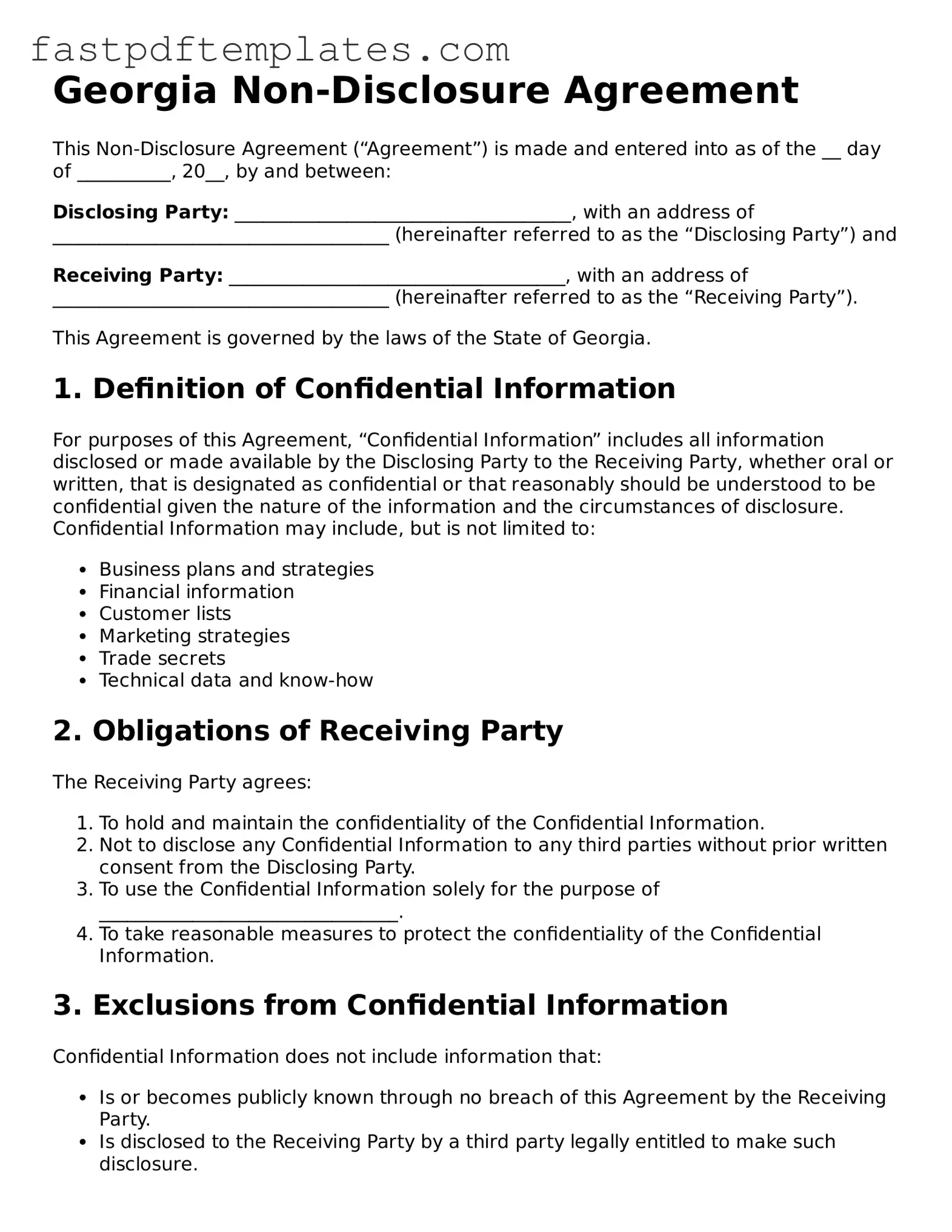Georgia Non-Disclosure Agreement
This Non-Disclosure Agreement (“Agreement”) is made and entered into as of the __ day of __________, 20__, by and between:
Disclosing Party: ____________________________________, with an address of ____________________________________ (hereinafter referred to as the “Disclosing Party”) and
Receiving Party: ____________________________________, with an address of ____________________________________ (hereinafter referred to as the “Receiving Party”).
This Agreement is governed by the laws of the State of Georgia.
1. Definition of Confidential Information
For purposes of this Agreement, “Confidential Information” includes all information disclosed or made available by the Disclosing Party to the Receiving Party, whether oral or written, that is designated as confidential or that reasonably should be understood to be confidential given the nature of the information and the circumstances of disclosure. Confidential Information may include, but is not limited to:
- Business plans and strategies
- Financial information
- Customer lists
- Marketing strategies
- Trade secrets
- Technical data and know-how
2. Obligations of Receiving Party
The Receiving Party agrees:
- To hold and maintain the confidentiality of the Confidential Information.
- Not to disclose any Confidential Information to any third parties without prior written consent from the Disclosing Party.
- To use the Confidential Information solely for the purpose of ________________________________.
- To take reasonable measures to protect the confidentiality of the Confidential Information.
3. Exclusions from Confidential Information
Confidential Information does not include information that:
- Is or becomes publicly known through no breach of this Agreement by the Receiving Party.
- Is disclosed to the Receiving Party by a third party legally entitled to make such disclosure.
- Is independently developed by the Receiving Party without use of the Confidential Information.
- Is required to be disclosed by law or regulation, provided that the Receiving Party gives reasonable notice to the Disclosing Party prior to such disclosure.
4. Term
This Agreement shall commence on the date first written above and shall continue in effect for a period of ___________ years, unless terminated earlier by either party with written notice of __________ days.
5. Miscellaneous
This Agreement constitutes the entire understanding between the parties regarding its subject matter and supersedes all prior agreements and understandings, whether written or oral. This Agreement may only be amended in writing signed by both parties.
IN WITNESS WHEREOF, the parties have executed this Non-Disclosure Agreement as of the date first above written.
Disclosing Party Signature: _______________________________
Name: ______________________________________________
Title: _____________________________________________
Receiving Party Signature: _______________________________
Name: ______________________________________________
Title: _____________________________________________
